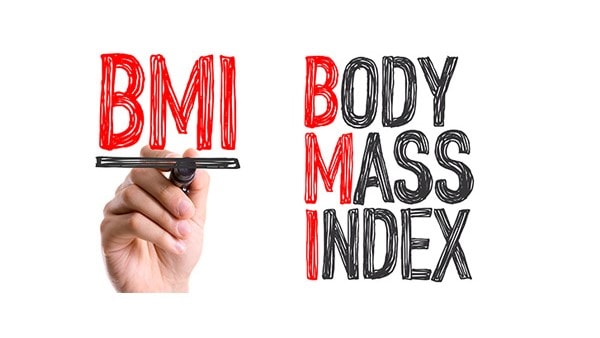At a glance
Body Mass Index (BMI) is a calculated measure of body weight relative to height. Because children and teens are growing, their BMI values are expressed relative to others of the same sex and age. These values are called BMI-for-age percentiles. Child and teen BMI categories are based on these percentiles, and include underweight, healthy weight, overweight, obesity, and severe obesity.

BMI categories for children and teens
BMI is a calculated measure of a person's body weight (in kilograms) divided by the square of their height (in meters). BMI categories for children and teens are based on sex-specific BMI-for-age percentiles (or BMI percentiles). Using percentiles to define BMI categories in children is important because they are still growing. Race is not a factor used in calculating BMI percentiles.
BMI categories for children and teens 2 through 19
or 35 kg/m2 or greater
The American Academy of Pediatrics1 uses an expanded definition of severe obesity:
or BMI 40 kg/m2 or greater
What is a percentile?
Percentiles rank the position of an individual by indicating what percent of the reference population the individual equals or exceeds. Percentiles are the most commonly used clinical indicator to assess growth patterns of children.
Example: A 12-year-old girl who is 5 feet tall and weighs 136 pounds has a BMI of 26.6. On CDC's BMI-for-age growth charts, the girl's BMI is at the 96th percentile. That means her BMI is the same or higher than 96% of 12-year-old girls in the reference population used to create the growth charts. The girl's BMI falls into the obesity category.
More about percentiles
BMI calculator
CDC's Child and Teen BMI Calculator for people 2 through 19:
- Calculates BMI, BMI percentile, and the corresponding BMI category.
- Shows results on a growth chart and explains the results.
- Links to additional resources.
- Is not a substitute for professional medical advice.
For people 20 and older, use CDC's Adult BMI Calculator.
Measuring height and weight
Accurately measuring height and weight is important to get correct calculations of BMI and BMI percentile. Follow these step-by-step instructions to measure children's height and weight accurately.
Explore more
CDC's 2000 Growth Charts
Percentiles curves for height-for-age, weight-for-age, and BMI-for-age to monitor the growth of children and teens 2 through 19.
CDC's 2022 Extended BMI-for-Age Growth Charts
Additional BMI-for-age percentile curves for children and teens with high BMIs (above the 97th percentile for sex and age).
About BMI
More information about BMI, how it is useful, and how it relates to other measures of body fat.
Questions about BMI
Frequently asked questions about BMI and how to interpret results in children and adults.
Adult BMI Categories
Definitions of BMI categories for adults 20 and older.
Tips to Support Healthy Routines for Children and Teens
Healthy habits are the building blocks of lifelong well-being for children and teens.
Preventing Childhood Obesity: 6 Things Families Can Do
There are many ways parents and caregivers can help children have a healthy weight and set up lifelong healthy habits.
- Hampl SE, Hassink SG, Skinner AC, et al. Executive Summary: Clinical Practice Guideline for the Evaluation and Treatment of Children and Adolescents With Obesity. Pediatrics. 2023;151(2):e2022060641. https://doi.org/10.1542/peds.2022-060640
